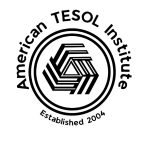Erik Erikson’s theory of psychosocial development outlines eight stages individuals pass through from infancy to adulthood. Each stage involves a unique challenge or crisis that shapes our identity and influences our interactions with the world. Understanding these stages can help TESOL (Teaching English to Speakers of Other Languages) instructors create engaging and relevant lessons that resonate with learners’ emotional and social needs.
1. Trust vs. Mistrust (Infancy):
- Focus: Building a sense of security and trust in the world.
- ESL Activities:
- Sensory Play with English Vocabulary: Introduce simple words like “soft,” “smooth,” or “loud” while exploring textures and sounds.
- Singing Nursery Rhymes: Incorporate familiar songs with repetitive lyrics to create a comforting and predictable language environment.
2. Autonomy vs. Shame and Doubt (Toddlerhood):
- Focus: Developing independence and self-confidence.
- ESL Activities:
- Choice-Based Activities: Let students choose between activities or materials, empowering them to take ownership of their learning.
- Simple Instructions and Role-Playing: Give basic instructions like “Stand up” or “Touch your head,” and encourage students to act them out.
3. Initiative vs. Guilt (Preschool):
- Focus: Exploring creativity and taking on new challenges.
- ESL Activities:
- Storytelling and Drawing: Encourage students to create stories and illustrate them, using English vocabulary to describe their creations.
- Collaborative Projects: Engage students in group projects that allow them to share ideas, negotiate, and express themselves creatively.
4. Industry vs. Inferiority (Elementary School):
- Focus: Building competence and a sense of achievement.
- ESL Activities:
- Project-Based Learning: Assign projects that allow students to research, create presentations, and demonstrate their knowledge in English.
- Goal Setting and Progress Tracking: Help students set language learning goals and track their progress, celebrating milestones along the way.
5. Identity vs. Role Confusion (Adolescence):
- Focus: Forming a sense of self and exploring personal values.
- ESL Activities:
- Discussions on Cultural Identity: Facilitate discussions about cultural differences and encourage students to share their experiences in English.
- Journaling and Creative Writing: Provide opportunities for self-expression through writing, allowing students to explore their thoughts and emotions in English.
Additional Considerations for TESOL:
- Cultural Sensitivity: Be mindful of cultural differences in how learners express emotions and navigate social interactions.
- Individual Needs: Recognize that learners progress through these stages at different paces and tailor activities to their individual needs.
- Creating a Safe Space: Foster a supportive classroom environment where learners feel comfortable taking risks and expressing themselves in English.
By understanding the stages of psychosocial development, TESOL educators can design engaging and relevant lessons that not only promote language acquisition but also nurture the social and emotional well-being of their students.



